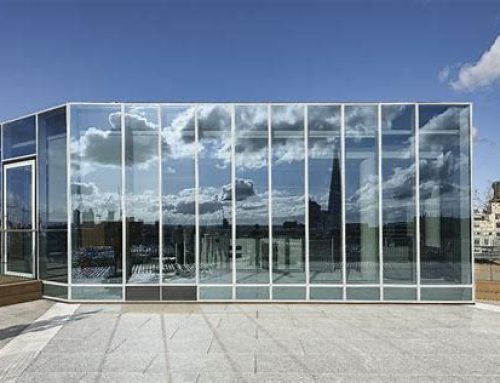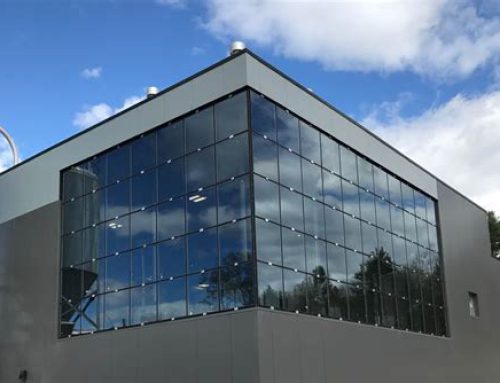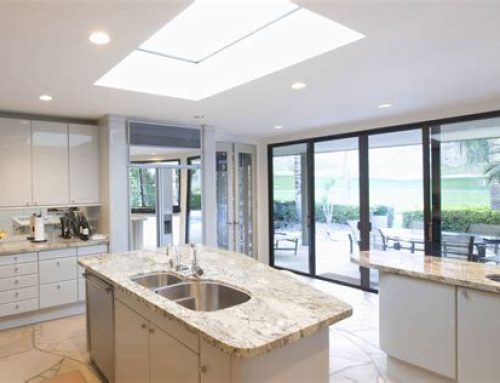Design and implementation of modern glass building facades in Canada

Introduction:
In recent years, Canada has witnessed a surge in the construction of modern glass buildings, reshaping the skylines of its urban centers. These structures not only stand as symbols of architectural prowess but also represent a commitment to sustainability and energy efficiency. The design and implementation of modern glass building facades have become paramount, not just for aesthetics but also for functionality and environmental considerations.
Integration of Sustainable Materials:
One of the key aspects driving the evolution of glass facades in Canada is the emphasis on sustainability. Architects and engineers are increasingly turning to innovative materials and technologies to reduce the environmental footprint of buildings. In this regard, the integration of energy-efficient glass panels and coatings has become a common practice. Low-emissivity (Low-E) coatings, for instance, help to minimize heat transfer, thus reducing the reliance on heating and cooling systems, ultimately lowering energy consumption.
Moreover, advancements in glass manufacturing techniques have led to the development of highly durable and recyclable materials, aligning with Canada’s commitment to green building practices. By incorporating sustainable materials into the design of glass facades, architects can create structures that not only reduce operational costs but also contribute to the overall well-being of the environment.
Innovative Design Approaches:
The design of modern glass building facades in Canada goes beyond mere functionality; it embodies creativity and innovation. Architects are constantly exploring new design approaches to enhance the visual appeal of buildings while ensuring optimal performance. From curved glass panels to dynamic facades that respond to environmental conditions, there is a growing trend towards pushing the boundaries of traditional architectural norms.
Additionally, the integration of digital technologies has revolutionized the way architects conceptualize and design glass facades. Building Information Modeling (BIM) software allows for the creation of highly detailed digital models, enabling architects to visualize the building’s performance and make informed design decisions. This iterative approach not only streamlines the design process but also facilitates collaboration among stakeholders, resulting in more efficient and sustainable outcomes.
Adaptation to Climate and Context:
Canada’s diverse climate presents unique challenges for the design and implementation of glass building facades. From the harsh winters of the northern regions to the temperate climate of the southern provinces, architects must consider factors such as insulation, solar heat gain, and natural ventilation to ensure occupant comfort and energy efficiency.
To address these challenges, architects are incorporating passive design strategies into the building envelope. This includes the strategic placement of windows and shading devices to maximize natural light while minimizing solar heat gain during the summer months. Additionally, the use of double or triple-glazed windows with argon gas fillings helps to improve thermal insulation, reducing heating and cooling loads throughout the year.
Furthermore, the contextual integration of glass facades plays a crucial role in enhancing the overall urban fabric. Architects often draw inspiration from the surrounding environment, incorporating elements of nature and culture into the design of buildings. By seamlessly blending with the local context, glass facades not only contribute to the visual harmony of the cityscape but also foster a sense of belonging within the community.
Challenges and Future Directions:
Despite the remarkable progress made in the design and implementation of modern glass building facades, several challenges persist. One such challenge is the need to strike a balance between transparency and thermal performance. While glass facades offer unparalleled views and aesthetics, excessive glazing can lead to increased energy consumption and glare issues. Architects must carefully consider the ratio of glass to opaque surfaces, as well as the selection of appropriate shading devices, to mitigate these issues effectively.
Moreover, the maintenance and longevity of glass facades remain significant concerns. In Canada’s harsh climate, exposure to extreme temperatures, precipitation, and pollutants can take a toll on building materials over time. Implementing proactive maintenance strategies, such as routine inspections and cleaning, is essential to prolonging the lifespan of glass facades and preserving their aesthetic appeal.
Looking ahead, the future of glass building facades in Canada is ripe with opportunities for innovation and advancement. Emerging technologies, such as smart glass and photovoltaic-integrated glazing, hold immense potential to further enhance the performance and functionality of glass facades. Smart glass, for instance, allows for dynamic control of transparency and solar heat gain, optimizing occupant comfort and energy efficiency in real-time. Similarly, photovoltaic-integrated glazing enables buildings to harness solar energy while maintaining a sleek and modern aesthetic.
Furthermore, the concept of biophilic design, which seeks to reconnect occupants with nature through the incorporation of natural elements into the built environment, is gaining traction in the design of glass facades. From green roofs and vertical gardens to biomimetic shading systems inspired by the natural world, architects are exploring innovative ways to promote health and well-being through the integration of biophilic principles.
Public Perception and Social Impact:
The proliferation of modern glass building facades in Canada has sparked discussions about their impact on the urban fabric and social dynamics of cities. While these structures often symbolize progress and innovation, they also evoke mixed reactions from the public. Some view them as symbols of prosperity and modernity, while others criticize them for their perceived lack of contextuality and contribution to the homogenization of cityscapes.
Additionally, concerns have been raised about the social implications of glass buildings, particularly regarding issues of privacy and transparency. With large expanses of glazing becoming increasingly common, questions arise about the blurring of boundaries between public and private spaces. Architects and developers must navigate these concerns sensitively, employing design strategies that prioritize occupant privacy while maintaining a sense of openness and connectivity with the surrounding environment.
Furthermore, the economic impact of glass building facades cannot be overlooked. Beyond their architectural significance, these structures contribute to the local economy through job creation, investment, and tourism. As iconic landmarks, glass buildings attract visitors and serve as focal points for cultural and commercial activities, driving economic growth and revitalization in urban centers across Canada.
Socioeconomic considerations also come into play when evaluating the accessibility and inclusivity of glass buildings. While these structures often embody ideals of progress and prosperity, they must also be designed with the needs of all members of society in mind. This includes ensuring barrier-free access for individuals with disabilities, as well as integrating inclusive design features that accommodate diverse cultural, socioeconomic, and generational demographics.
Apex of Innovation and Collaboration:
At the forefront of the global architectural landscape, Canada stands as a beacon of innovation and collaboration in the design and implementation of modern glass building facades. Architects, engineers, developers, and policymakers come together to push boundaries, foster creativity, and pioneer sustainable solutions that shape the built environment for generations to come.
The Canadian approach to glass building facades embodies a spirit of experimentation and exploration, where bold ideas are met with meticulous planning and rigorous testing. Through interdisciplinary collaboration and knowledge sharing, stakeholders leverage the latest advancements in materials science, digital technologies, and environmental modeling to create structures that not only inspire awe but also prioritize human well-being and environmental stewardship.
Moreover, Canada’s commitment to sustainability and resilience drives continuous improvement and adaptation in the realm of glass architecture. By embracing principles of passive design, energy efficiency, and circularity, architects and developers strive to minimize environmental impact and maximize resource efficiency throughout the lifecycle of glass buildings.
Furthermore, Canada’s diverse cultural landscape fosters a rich tapestry of architectural expression, where glass facades serve as canvases for storytelling and cultural representation. From sleek corporate headquarters to vibrant cultural institutions, each glass building tells a unique narrative that reflects the values, aspirations, and identity of its community.
In essence, the design and implementation of modern glass building facades in Canada are emblematic of the country’s spirit of innovation, collaboration, and inclusivity. As Canada continues to lead the way in redefining the future of urban architecture, the world looks on in admiration, inspired by the bold visions and transformative impact of Canadian designers and builders.
Conclusion:
In conclusion, the evolution of modern glass building facades in Canada represents a journey of innovation, sustainability, and social responsibility. From the shimmering skylines of Toronto to the rugged coastlines of Vancouver, glass buildings stand as testaments to the ingenuity and creativity of Canadian architects and builders.
As Canada embraces the challenges and opportunities of the 21st century, glass architecture will continue to play a central role in shaping the future of our cities. By harnessing the power of collaboration, embracing the principles of sustainability, and celebrating cultural diversity, Canada will remain at the forefront of architectural innovation, inspiring generations to come with its bold visions and transformative designs.





Leave A Comment